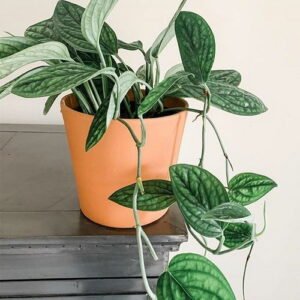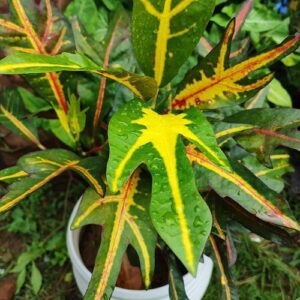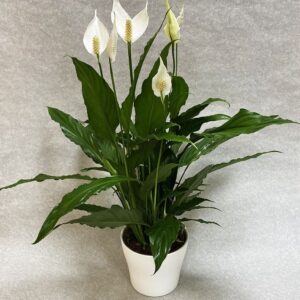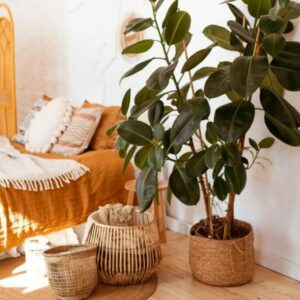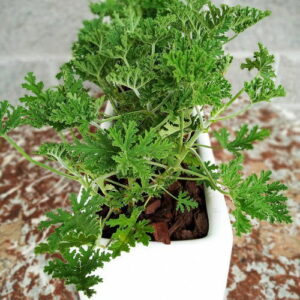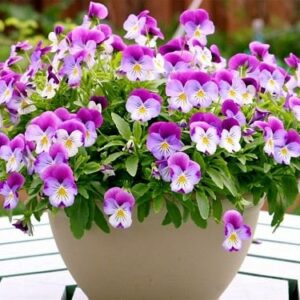
If you’re selling your home or planning to sell it soon, you know how important it is to make sure that it looks tidy and well kept, inside and out. You might need to touch up paint, clean carpets, and put away all those knickknacks. But what about your landscaping? Since curb appeal can make or break a sale, you’ll want to steer clear of landscaping blunders like these that can make home buyers walk—or even run—far, far away from your home.
1. Elaborate Water Features

Photo: istockphoto.com
Sure, man-made ponds and water features can help create a relaxing outdoor space, but they can also attract mosquitoes and other insects. It also takes a lot of work to keep ponds and fountains clean and well maintained—work potential buyers might not be willing to do. Morgan Knull, a broker with Re/Max Gateway, told the Washington Post that buyers are often intimidated when it comes to dealing with clogged filters, leaky liners, and other water feature maintenance tasks.
2. Invasive Plants

Photo: istockphoto.com
Some invasive plants may look pretty, but they are turnoffs for home garden-savvy buyers, since these kinds of plants can quickly take over a yard or garden. Invasive plants often destroy native, more beneficial plants, and can be costly to control. According to the California Invasive Plant Council, in California alone, invasive plants cost the state at least $82 million each year to control.
3. A Huge Lawn

Photo: istockphoto.com
A healthy lawn can be a plus when selling your home, but there can be too much of a good thing. For some potential homeowners, a huge lawn may be overwhelming. Since not all homeowners enjoy doing yard work, big, open lawns may mean an investment in time and energy they just don’t have to offer. Plus, eco-conscious buyers often prefer native and low-water options.
If you are putting your home on the market and have a big lawn, there are some things you can do to make the property more appealing: Consider installing a large patio, creating some smaller native plant beds to break the landscape up, or setting up multiple outdoor living areas.
4. Large Trees That Are Close to the House

Photo: istockphoto.com
While the best trees can offer shade or some textural contrast in your landscaping, big trees that are too close to the house can raise a red flag. Buyers may worry about damage due to falling limbs or roots damaging pipes—or, worse yet, the tree falling on the house. What’s more, tree removal can be pricey: According to HomeAdvisor, it can cost $2,000 or more per tree.
5. Lawn Chemicals

Photo: istockphoto.com
With more homeowners turning to organic ways to keep their landscaping lush and healthy, chemicals such as herbicides, pesticides, and fertilizers, are big no-no’s for some buyers. Instead of spraying chemicals, employ natural ways to kill weeds. Aeration works to fight dandelions, while corn-gluten meal can help fight crabgrass.
6. A Poorly Constructed Fire Pit

Photo: depositphotos.com
A fire pit can be a draw for buyers who love backyard entertaining, but a poorly made fire pit can definitely put off buyers. It also can be a fire hazard. If you have a fire pit in your backyard, make sure it is a safe distance away from any structures; 10 feet is a common standard. Plus, you’ll need to make sure you adhere to any city or local government rules about open fires on your property.
7. Too Many Annuals

Photo: istockphoto.com
Too many annual flowers may cause buyers to walk the other way. Since they have to be purchased and planted every year, annuals can be expensive and a lot of work to maintain—especially for a novice gardener. If you have large flower beds, consider swapping your annuals out for a few native perennial plants or shrubs and mulching to fill in.
8. Dog Urine Spots

Photo: istockphoto.com
A lawn full of brown urine spots from your dog could make some buyers think twice, as it may say you don’t bother with upkeep. Spots of dead grass will usually repair themselves over time, but, for a quick fix, Consumer Reports recommends cutting out the dead spot and filling it with plugs cut from a strip of sod.
9. Cracked Concrete

Photo: istockphoto.com
Cracks in your home’s concrete patio or walkways aren’t just unsightly, they can be dangerous. They can also be costly to fix, with HomeAdvisor estimating the cost of filling smaller holes or cracks at $100, if you do it yourself. Large repairs can set you back up to $20 per square foot.
10. Unconventional Plant Containers

Photo: istockphoto.com
Some feel using unconventional containers, like old tires used as planters or an old clawfoot tub upcycled into a small flower bed, adds humor or a unique touch to the yard. You’ll find some people even use old toilets to hold plants and flowers. These creative planters don’t appeal to everyone and can be off-putting. Opt instead for a little more order and color.
11. A Messy Yard

Photo: istockphoto.com
For those thinking of selling their home, a messy or unkempt yard can give potential buyers a bad first impression. For sellers, be sure to mow regularly, weed flower beds, keep the yard clutter-free, and put away toys when not in use.
12. High-Maintenance Trees and Shrubs

Photo: istockphoto.com
They may add beauty to your landscaping, but think twice before adding any high-maintenance trees or shrubs to your landscaping. These require a lot of upkeep and may take their toll if you can’t maintain them. For example, bamboo might seem like a great idea for a zen garden, but the invasive type can be hard to control. Certain kinds of hedges and fruit trees may need pruning or clipping several times during the year or the need to pick up fallen fruit regularly.
13. Overspending on Landscaping

Photo: istockphoto.com
Before you start planting anything, you’ll want to set a budget since it’s easy to overspend when it comes to landscaping plants and materials. Consider this: Real estate experts suggest spending 5 to 10 percent of the value of your home on landscaping. One easy way to cut landscaping costs is to replace some annuals with perennials. Since annuals cost more over time, try putting them in pots near entrances and along walkways. Opt for native perennials in larger flower beds and borders.
14. Plants That Attract Pests

Photo: istockphoto.com
You may not have signed up for pests, but some plants tend to draw in more pests than others. Fruit trees and bushes, including raspberry bushes and cherry and apple trees, are notorious for attracting pests like ants. In addition, certain garden vegetables, such as cabbage, cauliflower, peas, and tomatoes can attract pesky insects.
While some garden pests are harmless, others may severely damage or even kill your plants. If you decide on a plant or tree that’s notorious for attracting pests, make sure you have a plan to keep bugs at bay, whether it’s through organic treatments, such as placing other plants nearby that are known to repel pests, or by netting them.
15. A Sloping Yard

Photo: depositphotos.com
Homes that have a sloping yard can present quite a challenge when it comes to landscaping. Not only is soil erosion a problem, but maintaining the sloping section of a yard can be a never-ending nightmare. Instead of having nature take its course, try using a slope to your advantage. Break it out in tiers with pavers or large rocks, build a retaining wall, or even try adding some steps to cut down on maintenance and prevent the soil from eroding over time.
16. Inadequate Drainage

Photo: istockphoto.com
If your landscape doesn’t have the right drainage, you may be left with a muddy, messy pit for much of the year, not to mention a breeding ground for mosquitoes. Adding downspouts and downspout extensions can certainly help, just make sure they don’t empty out in an area of your yard that can easily flood. Adding crushed or pea gravel to encourage drainage can also help. In addition, aerating your lawn, creating a rain garden, and adding water-absorbing plants such as globeflowers, violets, and primrose can help with drainage.
17. Plantings That Need Constant Watering

Photo: istockphoto.com
When planning your landscaping, consider how much watering you (and potential buyers) are willing to do. Large flower beds containing annual plants will require much more water than native perennials. Keeping a large, lush, green lawn looking healthy will require plenty of water in the summer, as will a large vegetable garden. You’ll also want to put a lot of thought into how much watering your landscape will need if you live in an area that often has watering restrictions in place.
One helpful tip to cut down on the amount of water needed is to group plants with similar watering needs together to maximize water resources, or opt for low-water native plants for beds and native grasses for lawns.
18. Poisonous Plants

Photo: depositphotos.com
If you have pets or young children, you’ll want to steer clear of some poisonous plants. (You can bet that your home’s potential buyers will be on the lookout for them, too.) Some common landscaping plants that are poisonous to dogs include gladiolas, daffodils, milkweed, and ivy. Plants such as rhododendron, Lily-of-the-valley, foxglove (shown above), and hydrangeas are popular and are known to be poisonous to humans.
19. Damaged Outdoor Features

Photo: istockphoto.com
Nobody wants to see rotting landscape features such as crumbling retaining walls, or rotted flower or garden bed boxes as they can be both unsightly and dangerous. Depending on how severe the damage is, you may be able to make repairs yourself, or you may need to hire out for the project.
20. Lacking a Color Palette

Photo: istockphoto.com
Be sure to give your landscape color palette careful thought before you start planting. The best way to do this is by using color theory, which are guidelines designers use to create appealing color schemes. For example: Houses in neutral colors can be easy to work with since nearly any color flower will complement beige, gray, and brown backdrops.
If your home is a pastel color, look for flowers that create a contrast, such as bright orange flowers against a pale blue house. You can also use color to create the appearance of depth by placing warm colors in front of cool colors.
